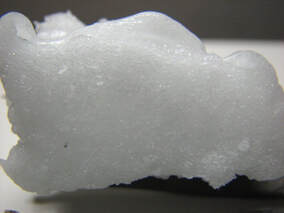
Periodically I have a need for a good closed cell foam but not often enough to stock varying densities of different types of foam for occasional use. I have a preference for silicone foams as they have more physical qualities that allow some real latitude in use. But, I still did not want to buy the foam and decided to make it myself. I wanted to do it totally using simple chemistry and not get involved with CO2, O2, and nitrogen generation as foam producers. What followed was a number of experiments in thinning silicone caulk, and generating CO2 as the foam producer. Little did I realize how many roads of partial success and failure I was about to travel!
My overall goal was to produce a good, stable, and functional foam using materials that are already in our homes and readily available locally. This will be covered in the video and the best formula and procedure will follow the video. But I will start with the finished product so you can decide to watch my process or not. And, as always, comments and dialog are welcome. Enjoy the trip!
Silicone caulk. Use GE type one, Dap, or other acetoxy cure silicone. The caulk has to cure with moisture liberating acetic acid. This is the one most used for sealing bathtubs and other areas. (Look for releases acetic acid on the back of the standard 10 ounce tube).
Silicone oil. Used for lubrication of many materials and readily available at hardware stores. I used Super Lube from Home Depot but any will work to thin silicone. (I learned the hard way to not use V M & P naphtha, Xylene, or others as they causes too many problems).
Surfactant. Any dish washing detergent to lower surface tension.
Baking Soda. Sodium Bicarbonate.
Vinegar. Regular white distilled vinegar.
Instructions:
Weigh out 20 grams caulk, 2 grams silicone oil, and 3-4 drops dish detergent. Stir well to integrate. These steps go together easily.
Add 10 grams baking soda. (Move quickly but mix completely to prevent voids. This will begin to skin over and release some acetic acid smell but this is normal).
Add 5 milliliters vinegar and continue to move quickly. (The mix will begin to foam but settles down fairly rapidly. You now have a stable closed cell silicone foam). It will cure externally in several minutes and cure completely in 12 hours. As most caulks perform, maximum strength is reached in 2-3 days.
 RSS Feed
RSS Feed
